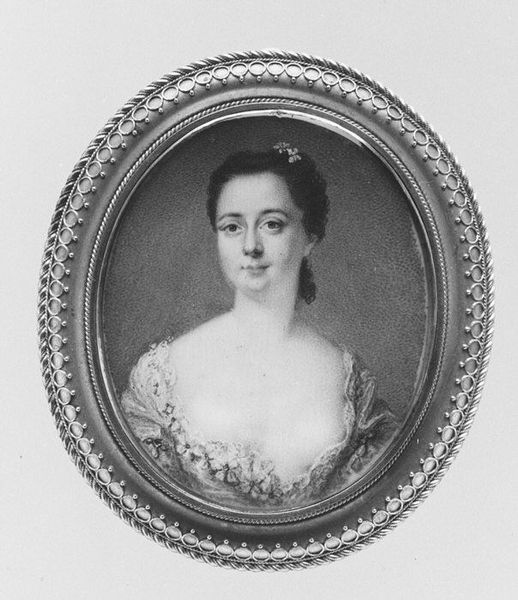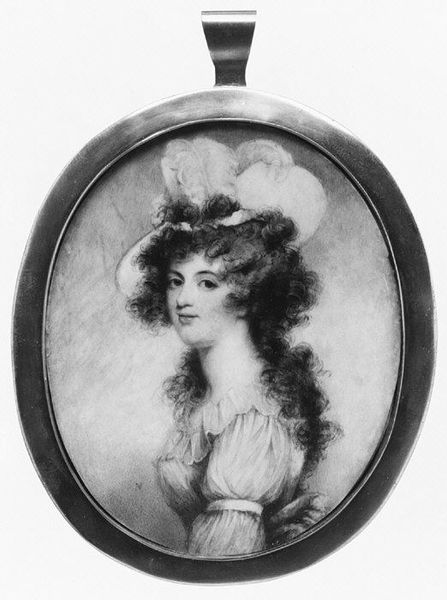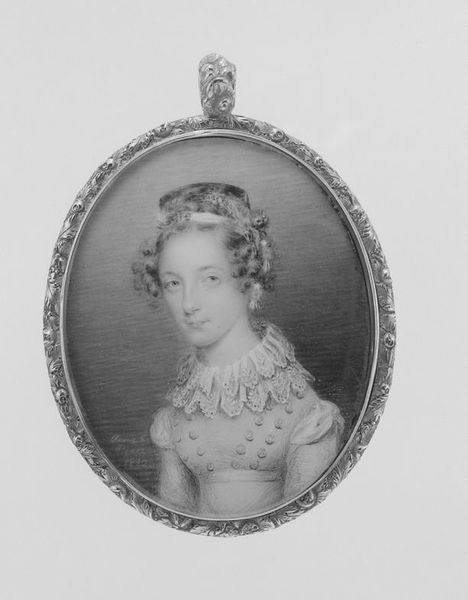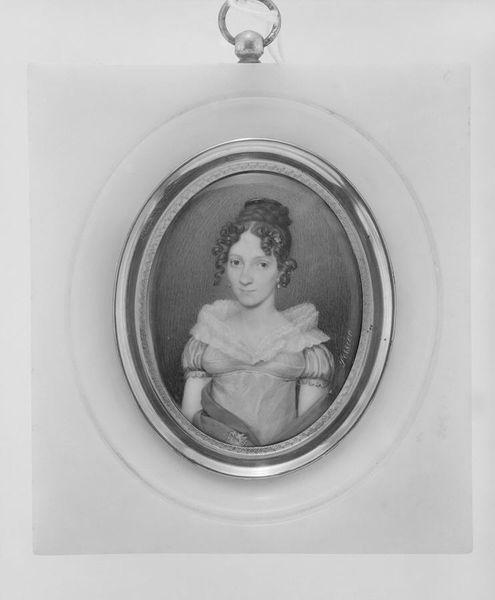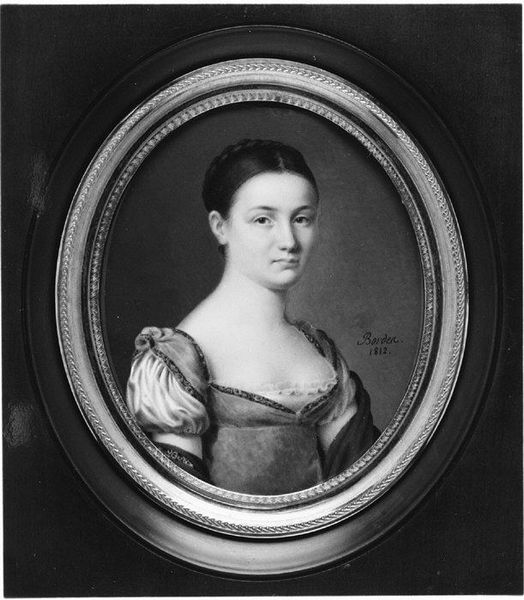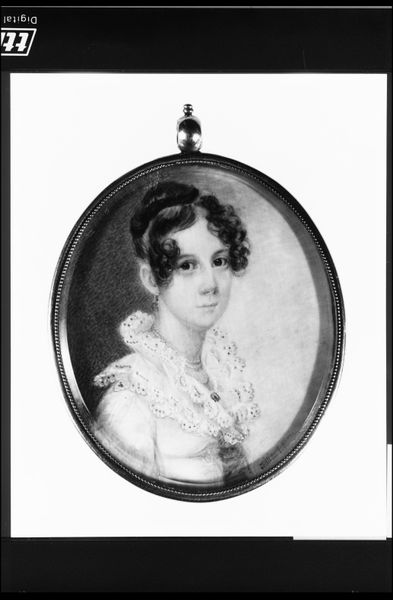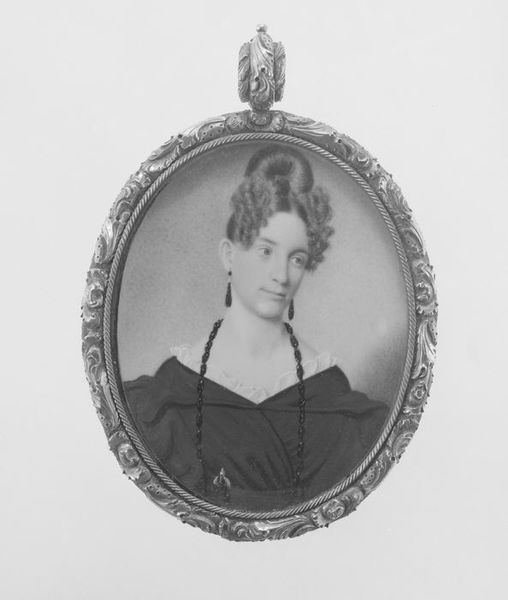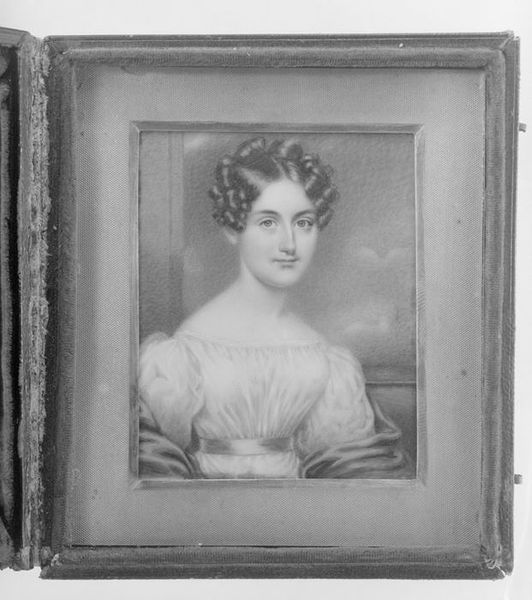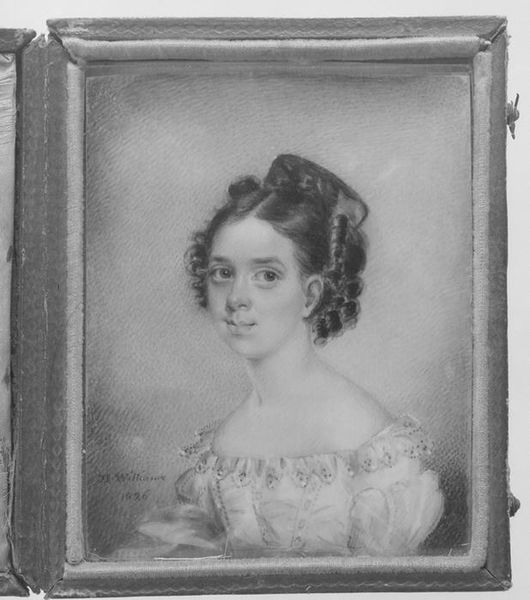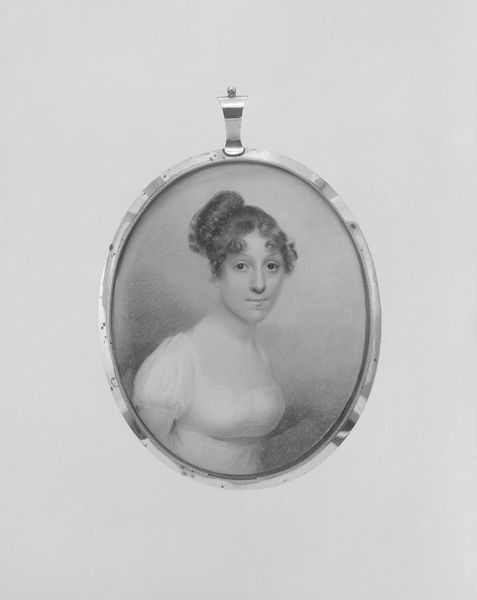
drawing, pencil
#
portrait
#
drawing
#
figuration
#
romanticism
#
pencil
#
academic-art
Dimensions: Oval, 8 1/4 x 6 3/4 in. (208 x 171 mm)
Copyright: Public Domain
Curator: The work before us is Nicolas Henri Jacob's "Portrait of a Woman," created in 1817. It’s currently residing here at the Metropolitan Museum of Art. Jacob used pencil to capture this refined likeness. Editor: My first impression is one of quiet constraint, almost a wistful resignation. There’s such an… containment in the pose, in the muted tones, even the tightly curled hair hints at enforced composure. Curator: I can see that. The Romantic era, even in its Neoclassical phases, did revel in emotional intensity, but it was often sublimated, channeled through prescribed forms and societal expectations, especially for women. This woman isn't exactly radiating joy, is she? Editor: Not exactly. She’s carefully positioned within these frameworks, right? Observe the delicate tiara. Who was she, do you think? Wealthy? Curator: Likely, yes. Jacob was known for his precise anatomical drawings and portraits, and he served as an artist for scientific publications and medical illustrations—his clientele would probably have come from the upper classes. Editor: So, this portrait, aside from its artistic merit, it acts as a historical document too. It silently screams volumes about the era's social codes, the pressure to conform, the limited pathways available to women. Curator: Absolutely. It’s a negotiation, isn’t it? The woman presents an outward image of elegance and serenity, fulfilling her expected role, but within the precision of Jacob’s line work, one might discern a certain psychological depth that could be interpreted as… quiet rebellion. Editor: Rebellion through stillness. I like that. Perhaps her power lies not in overt defiance, but in the subtle maintenance of her inner self within this rigid frame. Curator: The pencilwork, it’s fascinating, really. The delicate hatching, the attention to the fabric… all seem intended to underscore both fragility and resilience. It's a portrait not just of a person, but of a social position—and a negotiation. Editor: A negotiation silently unfolding on paper, then. Thank you; now I'm thinking about what's left unsaid just as much as what's presented in this stunning piece.
Comments
No comments
Be the first to comment and join the conversation on the ultimate creative platform.

